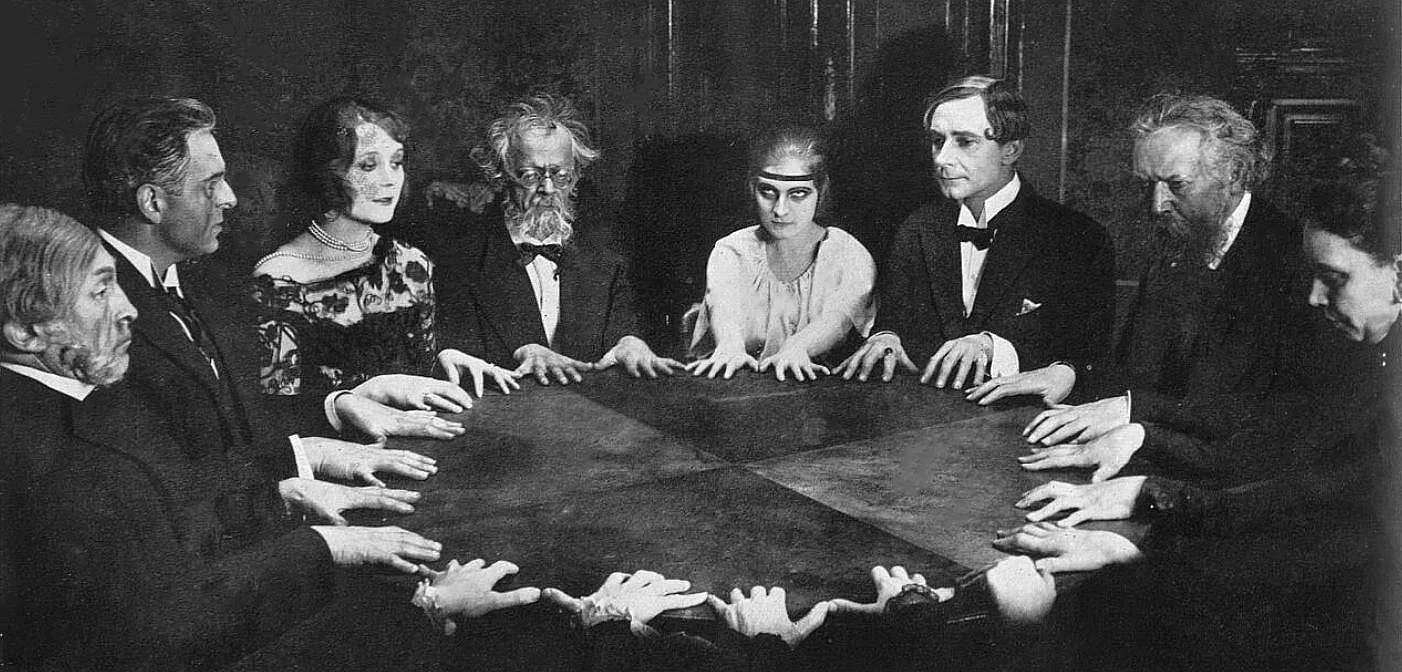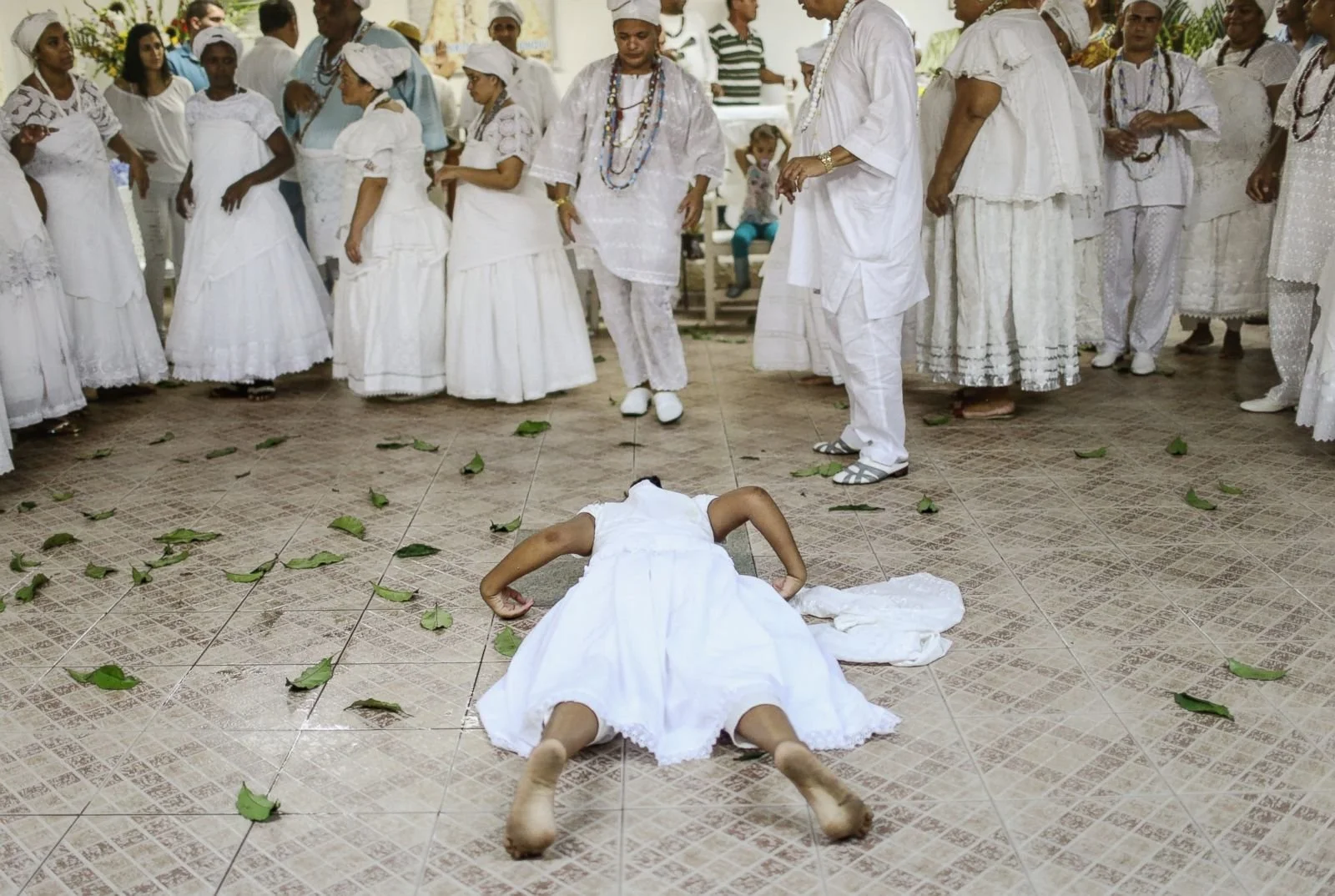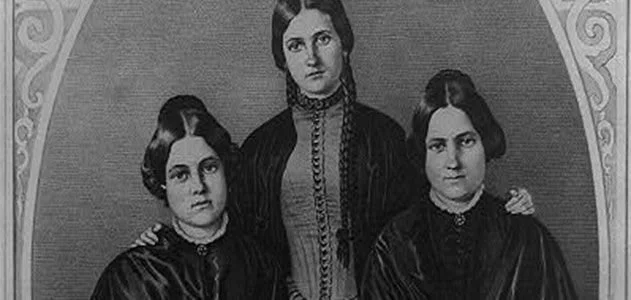Introduction and History Of Spiritism
What Is Spritism?
In simple terms, Spiritism is the practice of mediumship. It’s a spiritual discpline that focuses on developing a relationship and communicating with the spiritual realm, Specifically the dead. In the context of this course, Spiritism is a doctrine established by Allan Kardec (we use the term “established” loosely as Kardec borrowed from various indiginous and southeast Asian religious philosophies). Kardec’s philosophy explains, from a Christian perspective,the cycle by which a spirit supposedly returns to material existence after the death of the old body in which it dwelled, as well as the evolution it undergoes during this process.
Allan Kardec’s “Spiritism”
Allan Kardec is the pen name of the French educator, translator, and author Hippolyte Léon Denizard Rivail. Rivail was born in Lyon in 1804 and raised as a Roman Catholic. He pursued interests in philosophy and the sciences, and became an acolyte and colleague of Johann Heinrich Pestalozzi. Rivail completed a number of educational courses including a Bachelor of Arts degree in science and a doctorate in medicine. He was also fluent in German, English, Italian, and Spanish, in addition to his native French. Kardec became interested in Protestantism after his education in Switzerland
Rivail was in his early 50s when he became interested in séances, which were a popular entertainment at the time. Strange phenomena attributed to the action of spirits were considered a novelty, featuring objects that moved or "tapped", purportedly under the control of 'spirits'. In some cases, this was alleged to be a type of communication: the supposed spirits answered questions by controlling the movements of objects so as to pick out letters to form words, or simply indicate "yes" or "no" At the time, Franz Mesmer's theory of animal magnetism had become popular. When confronted with the phenomena described, some researchers, including Rivail, pointed out that animal magnetism might explain them. Rivail, however, after seeing a demonstration, dismissed animal magnetism as insufficient to explain his observations.
As a result of these influences, Rivail began his own investigation of psychic phenomena, mainly mediumship. During his initial investigation, he stated that before accepting a spiritual or paranormal cause for some phenomena, it would be necessary first to test if ordinary material causes could explain them. He proposed that fraud, hallucination and unconscious mental activity might explain many phenomena regarded as mediumistic, and also proposed that telepathy and clairvoyance may be responsible
He compiled over one thousand questions concerning the nature and mechanisms of spirit communications, the reasons for human life on earth, and aspects of the spiritual realm. He asked those questions to ten mediums, all purportedly unknown to each other, and documented their responses. From these, he concluded that the best explanation was that personalities that had survived death were the source of at least some mediumistic communications. He became convinced that the mediums:
provided accurate information unknown to themselves or others present (e.g. personal information about deceased individuals);
demonstrated unlearned skills such as writing by illiterate mediums, handwriting similar to the alleged communicating personality, and speaking or writing in a language unknown to the medium (xenoglossy and xenography);
accurately portrayed a range of personality characteristics of deceased individuals.
He compiled the mediums' responses that were consistent and adapted them into a philosophy that he called Spiritism, which he initially defined as "a science that deals with the nature, origin, and destiny of spirits, and their relation with the corporeal world. He explained that the doctrine was founded on the existence, manifestations, and teachings of spirits. Although not recognized as a science,he claimed that spiritism combines scientific, philosophical, and religious aspects, seeking a better understanding not only of the tangible universe but also of the universe beyond transcendence.
Spiritism in the Diaspora
Spiritism became popular and quickly spread making its way from Europe to the Diaspora. Although the doctrine has heavy Christian influences, it’s structured in such a way that anyone can practice it regardless of their religious or spiritual beliefs. This is because spirits (and the dead) are present in every religion.
By the mid-nineteenth century Spiritism had made its way to the Carribean, North America, and South America. Its strongest footholds were Cuba as Espiritismo, Puerto Rico as La Mesa Blanca, United States as Santerismo (and the Black Church, more on this later), and Brazil as Quimbanda. The diasporic cultures had no trouble incorporating Spiritism into their cosmology, transforming the practice into something very uniquely theirs. It was here that you start to see the use of African drumming, singing of religious hymns, and the commission of cultural spirits such as the Congos, Indios ( Native Americans), and Gitanas (Gypsies).
Spiritism in the United States was introduced in New York during the civil war. It’s popularity was sparked by the Fox sisters- Leah, Catherine, and Margeretta. In 1848, the two younger sisters – Catherine and Margaretta – lived with their parents John and Margaret, who were Methodists, in Hydesville, New York. Their home was reputed to be haunted by the spirit of a man that had been murdered. The sisters claimed the spirit communicated through rapping noises. News spread of the paranormal activity and the sisters' mediumship and their popularity grew.
Kate and Margaretta were sent to nearby Rochester during the excitement – Kate to the house of her sister Leah and Margaretta to the home of her brother David – and the rappings followed them. ]Amy and Isaac Post, a radical Quaker couple and long-standing friends of the Fox family, invited the girls into their Rochester home. Immediately convinced of the genuineness of the phenomena, they helped to spread the word among their radical Quaker friends, who became the early core of Spiritualists. In this way appeared the association between Spiritualism and radical political causes, such as abolition, temperance, and equal rights for women.
On 14 November 1849, the Fox sisters demonstrated their spiritualist rapping at the Corinthian Hall in Rochester. This was the first demonstration of spiritualism held before a paying public and inaugurated a long history of public events featured by spiritualist mediums and leaders in the United States and in other countries.Kate and Margaretta became famous mediums and they held séances for hundreds of people.
Spiritism and African Americans
The legacy of African American spiritualism is very much tied to the church, with African American Spiritualist churches tracing thier lineage to the 19th century American Spiritualism. However, in 1922 when the National Spiritualist Association of Churches enforced a policy of racial segretation, the Black Spiritualists formed the Colored Spiritualist Association of Churches. Over time the CSAC fragmented into many independent and non-denominational churches collectively known as the Spiritual Church Movement.
One of the most famous leaders of the Spiritual Church Movement was Mother Leafy Anderson. Mother Leafy Anderson was born in Wisconsin in the 19th century. She was a Spiritualist, and her mediumship included contact with the spirit of the Native American war chief Black Hawk, who had lived in Illinois and Wisconsin, Anderson's home state. Anderson was the founder of the Spiritual Church Movement in New Orleans, Louisiana in the 1920s, a loose confederation of churches largely based in the African American community. The church she founded in New Orleans featured traditional "Spirit Guides" in worship services, with a mixture of Protestant and Catholic Christian iconography, ] as well as special services and hymns that honored the spirit of the Sauk leader Black Hawk.. After Anderson's death, her successor, Mother Catherine Seals, then led the church, The Temple of the Innocent Blood, until her death, at which point it fractured, giving rise to a multiplicity of Spiritualist denominations in New Orleans and elsewhere.
At the present time, the spiritual church movement encompasses primarily churches which are influenced by Protestant Christian worship styles, especially Baptist and Pentecostal praise music, as well as churches that contain a great deal of Catholic imagery, including the veneration of saints.
It is common usage to distinguish spiritual church movement churches from other, often less explicitly Christian, Spiritualist churches, by the use of the name "Spiritual" rather than "Spiritualist" in their titles. This naming convention is found in mid-20th-century books such as How To Conduct a Candle Light Service by Mikhail Strabo and Rev. Adele Clemens of Divine Harmony Spiritual Church. These churches may hold mediumship training courses, perform psychic readings, scrying bibliomancy and crystal ball readings. Pastors may lead members in prayers, contact with ancestor spirits, perform candle work at an altar, cast spells, and administer healing work.
Some Important Things To Note About Spiritism
It’s a very personal practice. Every boveda, commission of spirits, songs and prayers, etc are going to reflect the practitioner as well as the land/area they reside on.
The ultimate goal is the advancement of the practitioner and their spirits.
Protection! Building a relationship with and strengthening your spiritual court increases your overall spiritual protection.
Spiritism allows you to develop your psychic abilities and other spiritual gifts.
It’s non demonatationa and inclusive, meaning it can be practiced no matter what your religious or spiritual beliefs.
It’s not a tool for cursing, hexing, or sending negative energy towards others. In fact, the main point is to connect with benevolent spirits.
WEEK 1 JOURNAL PROMPT
Take a moment to reflect on the following questions and submit your answers via the form below.






